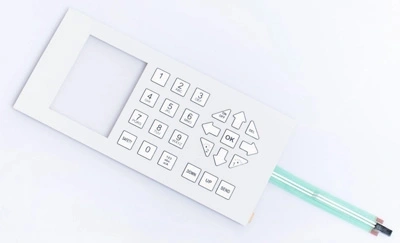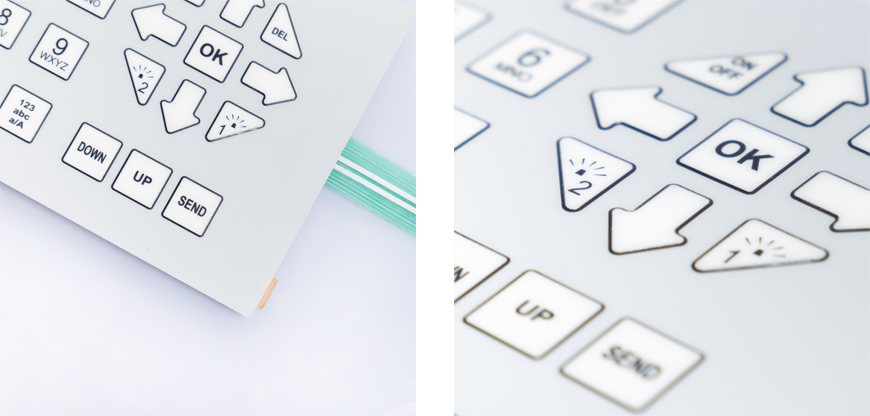
In today's fast-paced technological landscape, innovation is key. As we continue to seek ways to enhance user experiences and simplify interactions with electronic devices, one crucial component that often goes unnoticed but plays a significant role is the flat stick-on thin membrane momentary pressure touch switch. In this article, we will delve into the fascinating world of these switches, understanding how they work, their applications, and the benefits they bring to various industries.

1. Introduction
2. Understanding Membrane Switches
· What Are Membrane Switches?
· The Evolution of Membrane Switches
3. Flat Stick-On Thin Membrane Momentary Pressure Touch Switches
· How Do They Differ?
· Key Components
4. Working Principles
· The Role of Pressure
· Conductive Layers
· Actuation Mechanism
5. Applications
· Consumer Electronics
· Industrial Control Panels
· Medical Devices
6. Benefits of Using Flat Stick-On Thin Membrane Momentary Pressure Touch Switches
· Durability
· Customization
· Cost-Effectiveness
7. Challenges and Considerations
· Environmental Factors
· Sensitivity and Responsiveness
8. Future Trends
· Integration with IoT
· Improved Tactile Feedback
9. Conclusion
10. Frequently Asked Questions (FAQs)
In an era where touch and responsiveness are paramount, flat stick-on thin membrane momentary pressure touch switches have gained significant importance. These switches, often hidden beneath the sleek surfaces of our devices, serve as the bridge between human interaction and technology.
What Are Membrane Switches?
Membrane switches, in general, are low-profile, user-interface components that are widely used in various applications due to their simplicity and reliability. These switches consist of multiple layers, including flexible printed circuits, graphic overlays, and adhesive layers.
The Evolution of Membrane Switches
Over the years, membrane switches have evolved from their early mechanical counterparts to the flat and highly responsive designs we have today. This evolution has been driven by the need for more efficient and user-friendly input methods.
How Do They Differ?
Flat stick-on thin membrane momentary pressure touch switches are a specialized type of membrane switch. What sets them apart is their ultra-thin profile and the ability to provide momentary tactile feedback without the need for physical buttons or keys.
Key Components
These switches typically consist of three main layers:
1. A flexible membrane layer with printed conductive traces.
2. A graphic overlay that provides labeling and design aesthetics.
3. An adhesive layer that attaches the switch to the device's surface.
The Role of Pressure
When pressure is applied to the surface of the switch, it deforms the flexible membrane, causing electrical contact between the conductive traces. This momentary contact registers as an input signal.
Conductive Layers
The conductive layers within the switch are crucial, as they ensure reliable electrical connections even with repeated use.
Actuation Mechanism
The actuation mechanism in these switches is designed to provide tactile feedback, making them intuitive and user-friendly.
Consumer Electronics
Flat stick-on thin membrane momentary pressure touch switches are widely used in smartphones, tablets, and other consumer electronic devices, offering a seamless and responsive touch experience.
Industrial Control Panels
In industrial settings, these switches are employed in control panels due to their durability and resistance to harsh environmental conditions.
Medical Devices
Medical equipment often utilizes these switches for their reliability and ease of cleaning, ensuring patient safety.
Durability
These switches are known for their long lifespan, making them ideal for devices that require frequent use.
Customization
Manufacturers can easily customize the graphic overlay to match the device's branding and user interface design.
Cost-Effectiveness
Flat stick-on thin membrane momentary pressure touch switches are cost-effective to produce, reducing overall manufacturing costs.
Environmental Factors
Extreme temperatures, humidity, and exposure to chemicals can affect the performance of these switches, requiring special considerations in certain applications.
Sensitivity and Responsiveness
Balancing sensitivity and responsiveness can be a challenge to meet the diverse needs of users.
Integration with IoT
As the Internet of Things (IoT) continues to grow, these switches will likely play a crucial role in connecting everyday devices.
Improved Tactile Feedback
Advancements in materials and design will lead to even better tactile feedback, enhancing the user experience.
Flat stick-on thin membrane momentary pressure touch switches have silently revolutionized the way we interact with technology. Their durability, customization options, and cost-effectiveness make them a staple in numerous industries. As technology continues to advance, these switches will only become more integral to our daily lives.
Are flat stick-on thin membrane momentary pressure touch switches the same as regular buttons?
No, these switches provide momentary tactile feedback without the need for physical buttons.
Can these switches withstand harsh industrial environments?
They are designed to be durable, but extreme conditions may require additional protection.
What is the typical lifespan of these switches?
These switches are known for their long lifespan, often exceeding millions of actuations.
Do they work well with touchscreens?
Yes, they are often integrated into touchscreen devices to enhance the user experience.
Are these switches compatible with IoT devices?
Yes, they can be seamlessly integrated into IoT devices for various applications.